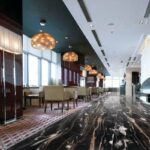A Weekend Retreat House by architect Ranjeet Mukherjee
Architect Ranjeet Mukherjee of The Vrindavan Project, Architecture & Interior Design firm, has completed a building which is a private residence at an organic farm located in rural Maharashtra, near the city of Mumbai.
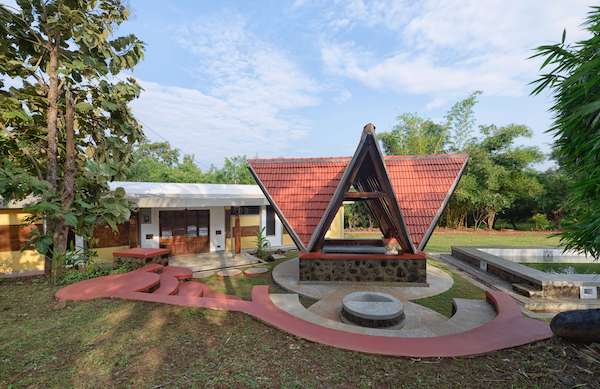
The site is eleven acres in size, undulating with steep contours and terraces. The lack of locally available skilled masons in the area posed quite a challenge. We responded to these circumstances by taking on the contractor’s role ourselves, working directly with villagers from the nearest settlement. To our delight the enthusiasm displayed by these locals was extraordinary.
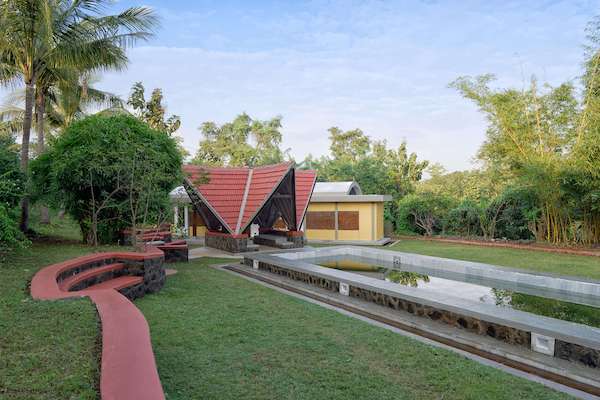
In order to provide structural integrity, allowing for the building to be disaster-resistant; this building’s rammed earth foundation is capped with a plinth beam, tying the whole base together. A water channel moat is integrated with the foundation to provide cooling and insulate the home from infestations; while also serving as a beautiful water body.
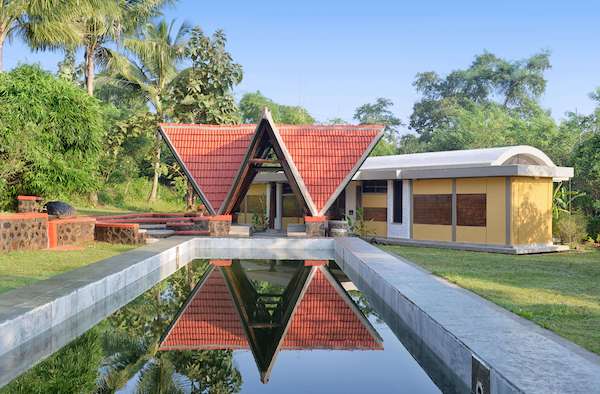
All load-bearing walls for the building are created using compressed earth, just as in the foundation.
These walls are rammed by hand, in-situ using a shuttering assembly, which is easily assembled and dismantled. This shuttering is designed to create any size of the wall using only a single apparatus, in turn minimizing equipment and thereby costs of construction-related infrastructure.
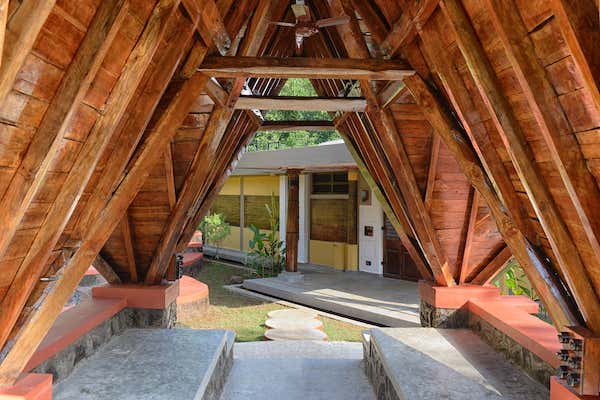
A wall panel of 8ft x 8ft and 9″ inches in thickness can be rammed into place in a single day. Since this entire operation requires only human energy and basic raw materials, such a method is naturally low in carbon footprint, as well as economically feasible. The building is a load-bearing structure and the entire roof of this home is supported by these earth walls alone.
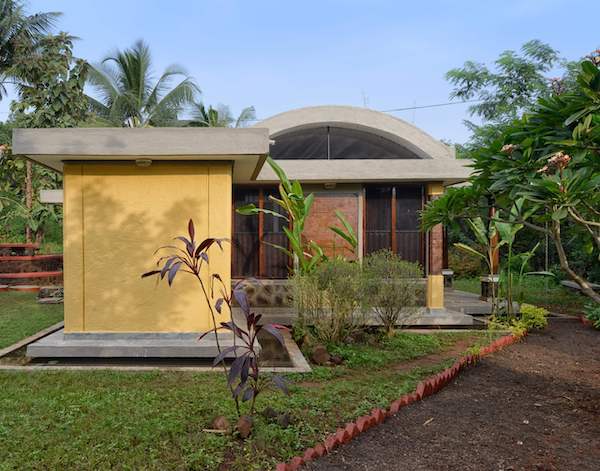
Where concrete slabs are necessary for the roof, inverted terracotta pots have been cast into the slab. These create hollow fillers in normal slab thickness, minimizing concrete content. These earthen pots are standard locally available sizes, which are retained in the ceiling, visible from below. This method creates a waffle effect in the slab that is aesthetically unique, and drastically reduces the dead load of the structure, as embodied concrete quantity is minimal.
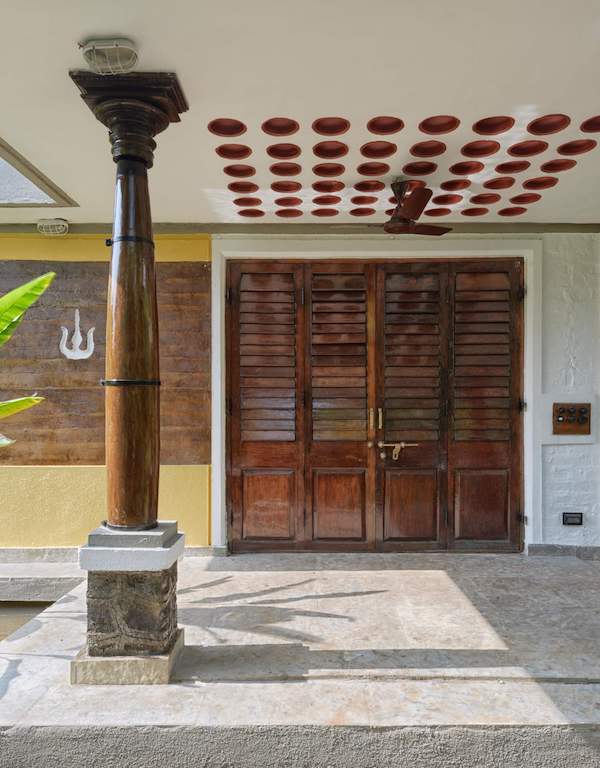
The primary volume of this home has omitted the use of concrete altogether, by spanning a brick vault, which removes steel from the equation while reducing cement content to create a stable roof. Apart from the natural beauty of such a form, this vault provides for ventilation and illumination of the space. Owing to the large thickness of the vault’s section; contained spaces are naturally cooler, reducing electricity consumption over the building’s lifespan.
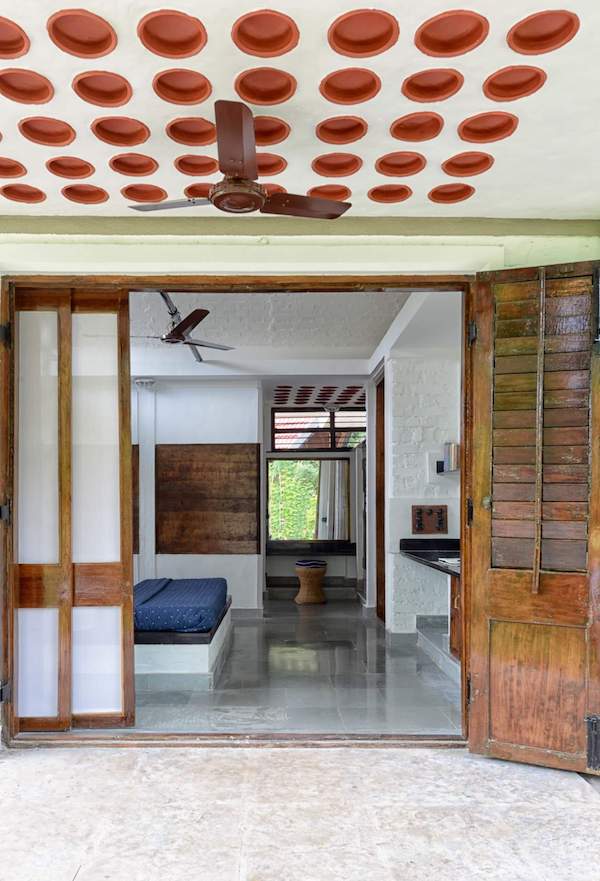
All doors, windows, and load-bearing columns are sourced as recycled materials, salvaged from demolished mansions at the Karaikkudi town of Tamil Nadu. Timber can be considered as one of the few truly renewable construction materials available, with the added benefit of carbon sequestration over the lifespan of said tree. Therefore, the incorporation of re-used timber is a double bonus in terms of sustainability quotients and the embodied energy efficiency of the building.
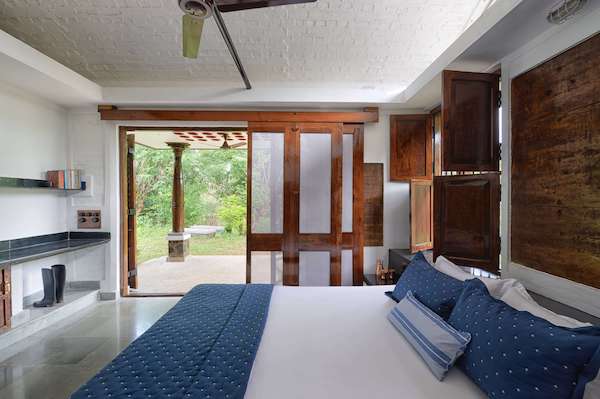
Integrated with other landscape elements, we decided to attempt an innovation of the region’s traditional roof form as well, using locally acquired timber with standard Mangalore tiles. Taking the form of a gazebo, designed as five interlocking pyramid structures. This well-ventilated outdoor space is open on all four sides. Providing ample recreation area, the feature serves as an extension of the home’s living area while providing much-needed shade for swimming pool related activity.
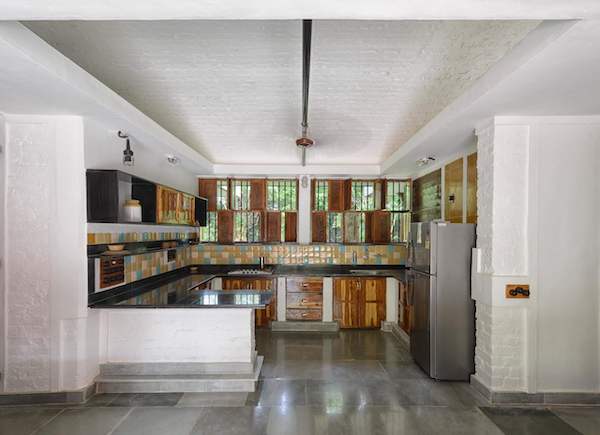
The retaining wall built with random rubble stone masonry for this contoured site is designed to double up as a seating and barbecue fire-place in some areas, or act as a serving counter and washing platform in other segments, and ultimately turning into an access staircase to the site.
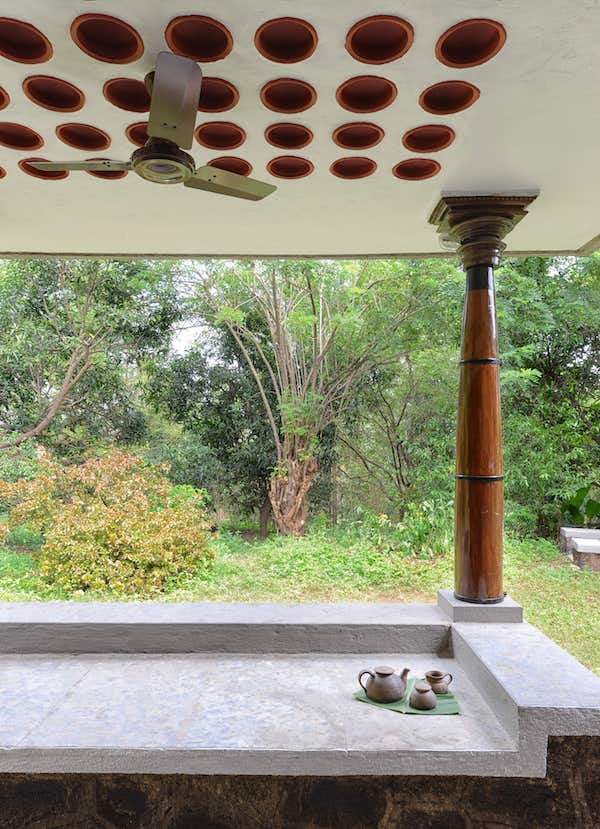
A swimming pool made primarily of local stone has been built with buttress walls, retaining water just as in vernacular step wells. The large surface area of the tank harvests vast amounts of rainfall while serving as a farming water reservoir for dry spells. Overflow of this pool fills the house moat, and feeds plantations thereafter, using only gravity for circulation.



